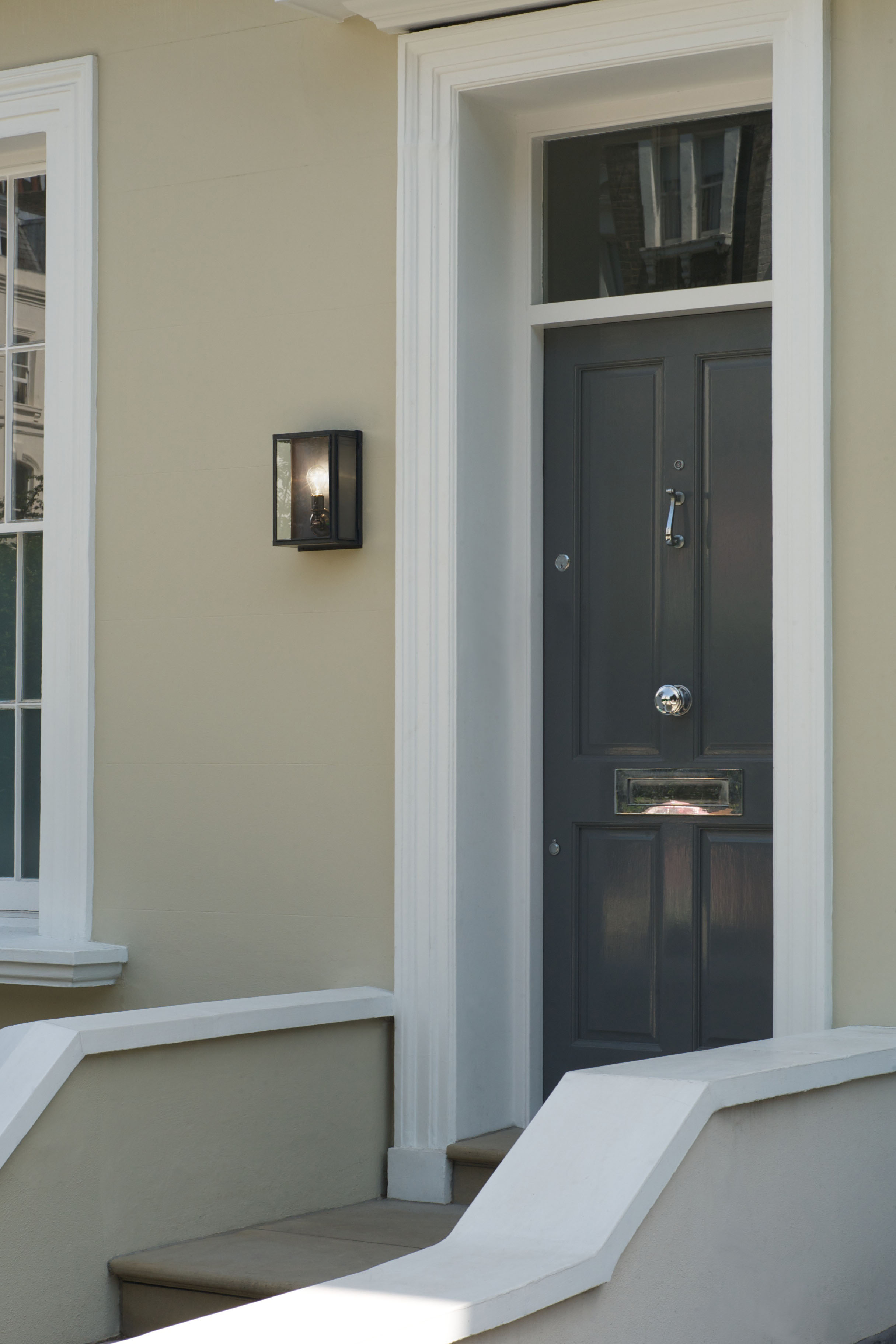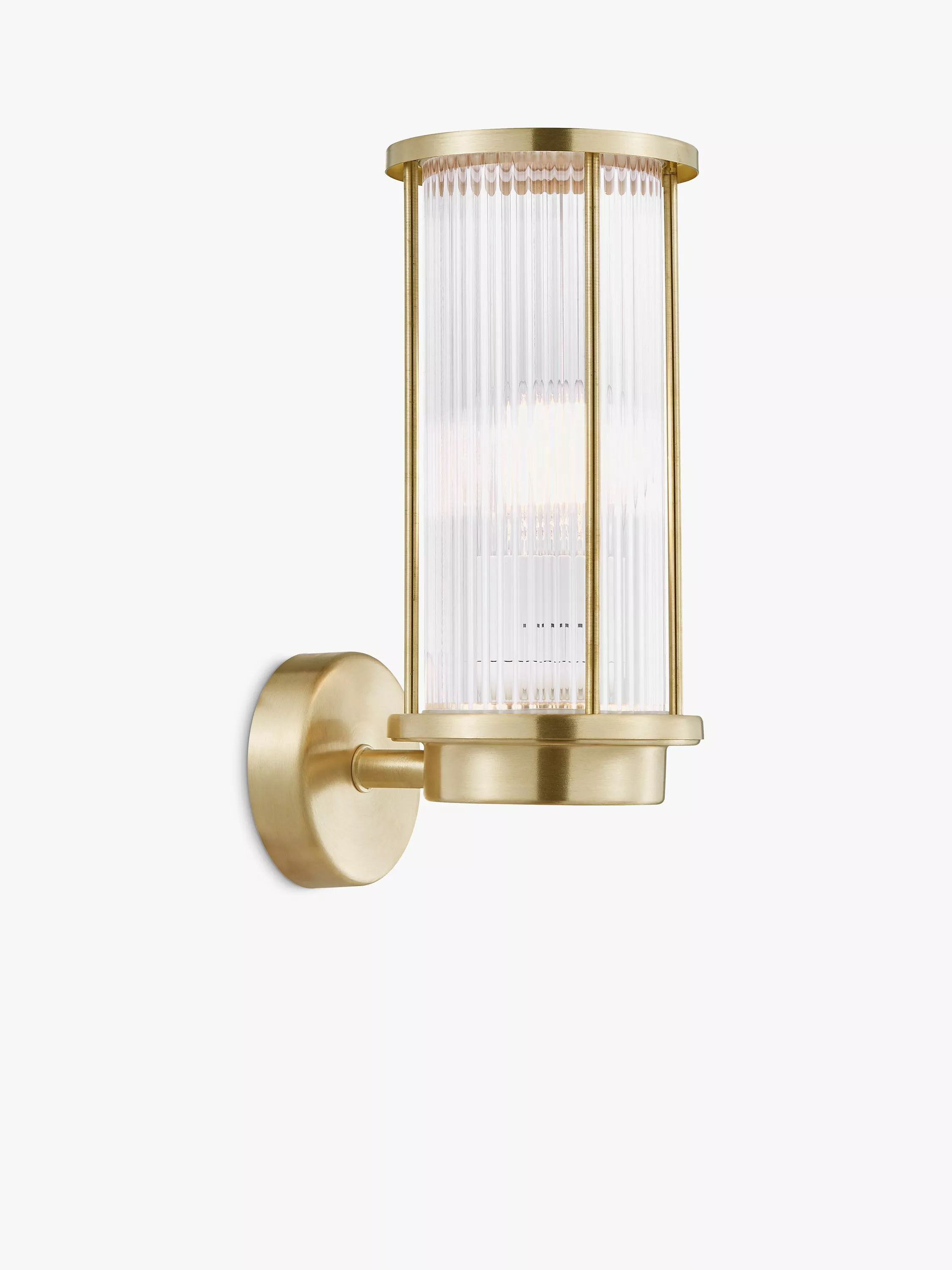9 porch lighting ideas to illuminate the entrance to your home
The best porch lighting ideas will brighten up any entryway in a practical yet subtle way – take a look at our favourite styles

Exploring porch lighting ideas is a good start when it comes to boosting the look of your home. But getting your lighting right will also help illuminate potential hazards – such as steps and plant pots – to make entering your property at night, much easier.
Practicalities such as whether your lighting needs to be mains, battery or solar powered should first be assessed, as well as desired brightness, with the design and style of your porch also playing a part in the choice you make. Covered porch ideas might work best with ceiling or wall lights, while those with a lengthy walk to the door might require a motion sensor.
Here we've picked out some of our favourite ways of lighting up a porch.
Porch lighting ideas
1. Combine porch lights with outdoor lighting

When it comes to an oak frame porch, using a simple ceiling light over the front door can create cohesion with the rest of the outdoor lighting scheme. The simplicity of the lighting choice also doesn't detract from the home's exterior as a whole. Instead, outdoor wall lights highlight the stunning oak frame home with up and down lighters, as well as light from the property's interior providing additional illumination through its windows.
"Layering the lighting to your entranceway creates a more welcoming ambience to return home to especially in the winter months. Mindful design at the front of the home will not just add kerb appeal and visual interest. It will also give added functionality," says Peter Legg, new product development manager at Där Lighting.
2. Use a wall light for a small or shallow porch

Although the entrance design is relatively small on this contemporary extension to a barn conversion, the porch light cleverly illuminates the front door to guests and visitors. The high and bright wall light provides a spot to wait, while the interior lighting can be seen through the large expanses of glazing for additional illumination.
"The average porch size in the UK is around 3m or smaller. While this size is big enough to make a positive impact on your lifestyle and leaves enough space to store any muddy boots, it is a relatively compact area for internal lighting as you don’t want there to be too much glare," explains Peter Legg.
"If your porch is shallow, then fix your light to the side of the wall so that it doesn’t encroach on your front-facing space, but will still give out a welcoming glow. Another option would be to install an extra wall light that can sit above, or to the side of your usual parking area."
3. Ceiling lights work well in covered porches

Where your porch is covered, ensure adequate lighting to illuminate every corner for an impactful effect. Recessed spotlights in the ceiling are ideal for this type of porch and can be incorporated into any style of home without detracting from the overall design.
Peter Legg agrees, saying: "The best option for the inner of an enclosed porch is to install recessed lights into the area, ideally fitted to a dimmer switch so that you can change the level of illumination you need depending on the seasons. This will be the utilitarian light stream, useful for when it comes to putting on coats or shoes, but it needs to be supported by accent lighting on the outer side of the structure."
Shop outdoor lighting

Set up the Philips Hue Lily Outdoor stake lights and paint your outdoor spaces with a wash of vibrant colour.
4. Match porch lighting to the rest of the home

On this timber clad home, the homeowner chose to light up their back porch area with subtle wall lights that match the exterior lighting affixed to its stunning orangery extension. This creates a cohesive look for the entire rear of the property as well as flooding the rear garden with light.
5. Don't forget to light up an indoor porch

Go for a show-stopping pendant when lighting up an indoor porch area to really make an impression on guests and a warm welcome home on your return.
This stunning example can be seen by visitors when standing outside the front door and beautifully contrasts with the yellow hallway when exiting.
6. Use smart lighting ideas for your porch

It can be very frustrating to fumble around in the the dark for house keys, only to then scramble to turn on the light once you've gained entry, so opting for indoor and outdoor smart lighting that is controlled by proximity, or the location of a smart phone solves many issues.
7. Choose wall lighting to match a home's style

"When adding a light to the outside of a porch, consider it the introduction to your internal scheme. If you’re using brass indoors, choose this finish for the front of the home too for synergy, or try a colour that matches your door for an understated look. By selecting a style to enrich your architecture, you can accentuate the character of your home," says Peter Legg.
In this small porch idea, mirroring delicate wall lights either side of a front door and under a cover helps introduce the style and character of the home. Meanwhile, lighting is directed down towards the doorbell, door handle and shrubbery to fulfil practicalities.
8. Make sure your outdoor lighting is suitable

All lights designed for the outdoors are given an IP rating – the minimum rating for an outdoor porch should be a minimum of IP44, or better yet IP65. Be aware of this when researching the styles and options to suit your favourite ideas.
“Not all lights are safe for outdoor use, let alone all year round, and there are a few factors to look out for," explains Jon Saeed, managing director of LightingLegends.com. "First and foremost, make sure to use IP65-rated waterproof lights that thrive in all weather conditions. Waterproof lights are designed to be more durable than standard lighting, preventing corrosion, rust and electrical hazards when exposed to rain and moisture. It’s also important to use low-wattage lighting systems and make sure your connectors and extensions are outdoor-rated.”
9. Mix lighting types in a large porch space

If you're lucky enough to have a porch, veranda or covered outdoor space with a little more room, be it at the front or back of the house, consider mixing and matching more practical ceiling lighting with decorative string lights.
"If you have a large portico that spans across the entire front of the home, position wall washers evenly across the space," says Peter Legg. "A good guiding point is to use the gaps between your pillars as the marker point for where your lighting should go. If you carve out a seating area consider placing it between a pair of lights.
"This way you can use the spot not just for socialising but also for reading as the dusk draws in. Similarly, add in portable lanterns and candles to increase the ambient lighting within the space."
Once you've chosen your lighting design and style, it's worth considering how you want your lighting to operate in your exterior space. While simple types of light switch can work well, you might also want to consider including motion sensors, especially for a front porch.
"No matter your style of porch, always consider motion sensor designs. This will not only help you save money on your electricity bill but give you added security throughout the night, says Peter Legg. "Lights fitted with a passive infrared sensor (PIR) work by detecting heat so it's best to place them out of the way of any obstacles (for example a pillar) to give them a clear monitoring area. It may seem like these lights should be placed at the highest point, however too high and you’ll create blind spots so place them at around six to eight feet up.
"If you don’t want all of your lights to be PIR you could place one on the corner of your porch or just overhead of your front door so that it is kept out of your direct sightline but can still provide added protection to your home."
Get the Homebuilding & Renovating Newsletter
Bring your dream home to life with expert advice, how to guides and design inspiration. Sign up for our newsletter and get two free tickets to a Homebuilding & Renovating Show near you.
Amy is an interiors and renovation journalist. She is the former Assistant Editor of Homebuilding & Renovating, where she worked between 2018 and 2023. She has also been an editor for Independent Advisor, where she looked after homes content, including topics such as solar panels.
She has an interest in sustainable building methods and always has her eye on the latest design ideas. Amy has also interviewed countless self builders, renovators and extenders about their experiences.
She has renovated a mid-century home, together with her partner, on a DIY basis, undertaking tasks from fitting a kitchen to laying flooring. She is currently embarking on an energy-efficient overhaul of a 1800s cottage in Somerset.



